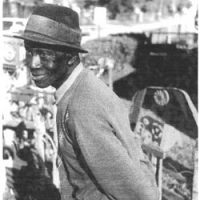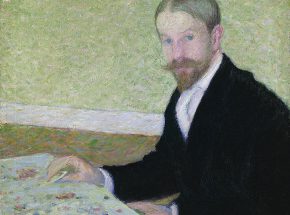

David Butler was born in Good Hope, Louisiana, the first of eight children, to a religious family. His father was a carpenter, his mother a devout worker in her community church. Butler worked cutting grass, as a sugarcane harvester, farmer, wagon driver, and a laborer in a sawmill. He turned to art fulltime after a partial disability from an accident in the sawmill.
He used brightly colored house paint on his imaginative sculptures, many of them wind driven assemblages that he placed around the yard. He also created metal cutout polychrome window screens to embellish his small house in Patterson, Louisiana. His constructions of farm, exotic and imaginary animals, roosters, chickens, and flying elephants, religious subjects such as crucifixion and nativity scenes, as well as figural forms like this Statue of Liberty, were fashioned from roofing tin that he flattened, cut with a meat cleaver and hammer, painted, and sometimes decorated with found objects,
Butler enjoyed acclaim and a one-person exhibition at the New Orleans Museum of Art, Louisiana, in 1970. He was included in the seminal Black Folk Art in America 1940-1980, Corcoran Gallery of Art, Washington, D.C.,1980; and in Passionate Visions of the American South, New Orleans Museum of Art, 1995. Butler is represented in the permanent collections of the American Folk Art Museum, New York City; the Newark Museum, New Jersey; the New Orleans Museum of Art, Louisiana, among others.
Prepared by Lee Kogan
Director Folk Art Institute
Curator of Special Projects for the Contemporary Center
10/21/05
